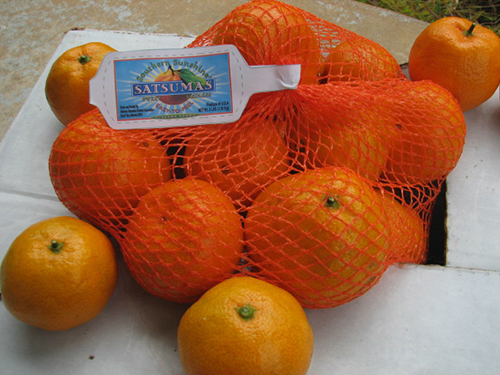In right spot, kiwi and satsumas can work in your garden
Winter may be nearing, but that doesn’t mean you have to do without fresh in-season produce. After all, we have a great supply of Alabama-grown pecans, chestnuts, pumpkins, winter squash, apples and pears — enough to fill a cornucopia to its brim. And that’s not even counting the more exotic fruits of fall and winter such as Asian persimmons, loquats, kumquats, pomegranates, a variety of citrus fruits and kiwifruit.
Some of these crops, such as pomegranates, may not be mainstays of the winter menu but have been grown in Alabama yards for generations. Others have a long history of production in parts of the state, such as the Gulf Coast region’s satsuma mandarin orange industry, but until recently were not grown widely. Still others are relatively new crops for the state but are becoming more and more popular for both home and commercial production.
 One thing all these crops have in common is that they have benefited from research conducted through the Alabama Agricultural Experiment Station, the agricultural research arm of our state land-grant universities. That research has helped find better ways to produce these and many other crops across the state.
One thing all these crops have in common is that they have benefited from research conducted through the Alabama Agricultural Experiment Station, the agricultural research arm of our state land-grant universities. That research has helped find better ways to produce these and many other crops across the state.
For example, AAES has demonstrated that both kiwifruit and satsumas do exceptionally well in central Alabama and even farther north in the state and are not just limited to southern parts of Alabama.
The key to making this plethora of possibilities work in your garden is to choose varieties and cultivars that are adapted to your area, plant them in the most ideal spot in your yard for their specific needs, then give them all the attention they need. Some will need more attention than others, by the way, so make sure you’re up for the task before you invest in any new plant.
Late fall and on through the winter is considered prime planting season for many fruit and ornamental trees, shrubs and vines in Alabama—a great way to work off some of those holiday calories. And now is a good time to do a little research of your own by exploring the different options you might want to plant for yourself. Check with your county Alabama Cooperative Extension System office, area plant nurseries or fellow local gardeners to see what they suggest.
Winter’s coming, time for mulching
Now is also the time for another big garden chore—mulching.
Mulching provides lots of benefits year-round, such as controlling soil erosion, suppressing weeds and conserving water. But as an email from Gloria and Wayne Littles of Conecuh County reminded me, it is especially important in protecting tender plants in the winter. They were concerned about protecting their strawberries over the winter, which may be especially important this year: In case you haven’t heard, a harsh winter is predicted.
While not all plants need to be mulched for the winter, an application of organic mulch in the fall can be useful for many fruiting and ornamental plants, especially new plantings that have not had time to put down a deep root system. Applying a mulch for the winter provides a blanket for the plants’ root systems, helping insulate soil from temperature fluctuations and can also prevent cold damage to above-ground plant parts.
When it comes to other plants, the amount or type of mulch needed may vary, but typically an application of 2 to 5 inches of straw, pine needles, hay, compost, leaves, bark chips or other organic matter should be mulched evenly over or around the plants. Do keep the mulch material a couple of inches away from the trunks of trees and shrubs, though, so it doesn’t promote rot or allow small rodents that may seek cover in the mulch to gnaw on the trunk.
Of course there is so much more to learn about mulching, planting and generally scheming for next year’s garden. But at least we have all winter to tuck in with our catalogues and garden books and maybe a bowl full of satsumas by the fire. And if you have questions, send them on. If I don’t know the answer I’ll sure try to find out!
[box]
November Gardening Tips
- Store unused pesticides in sealed containers and place them in freeze-protected locations for the winter.
- Clean and flush gasoline out of lawn mowers and other garden equipment before storing them for the winter.
- Test your soil and begin adding needed amendments once the results are in.
- Turn the compost pile.
- Bring potted plants into the house or place in protected area before the first hard freeze.
- Plant leafy greens such as lettuce, arugula and spinach, as well as garlic and shallots.
- Plant spring-blooming bulbs.
- Plant beets, carrots, radishes and asparagus.
- Plant annual flowers such as sweet peas, poppies, snapdragons, larkspurs and delphiniums.
- Keep bird feeders cleaned and filled.
[/box]
Katie Jackson is a freelance writer and editor based in Opelika, Alabama. Contact her at [email protected].





